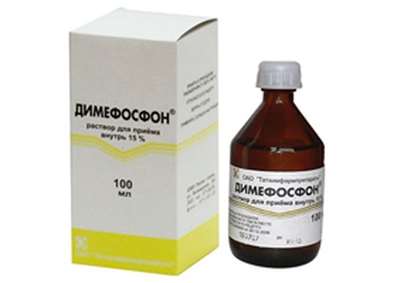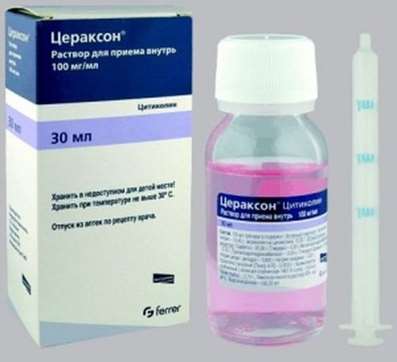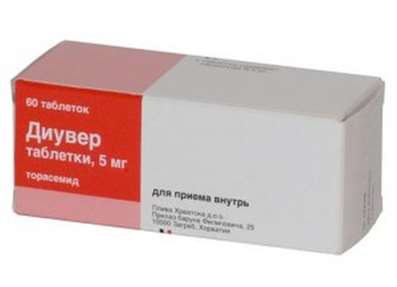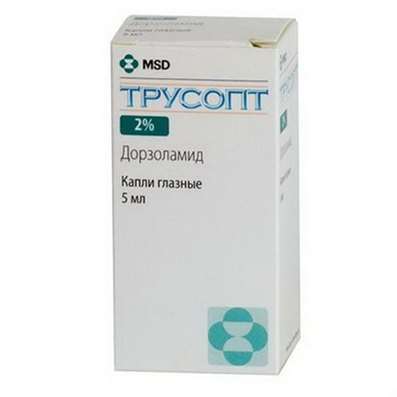Instruction for use: Phezipam
I want this, give me price
Dosage form: tablets
Active substance: Bromdihydrochlorphenylbenzodiazepine
ATX
N05BX Other anxiolytics
Pharmacological group:
Anxiolytics
The nosological classification (ICD-10)
F29 Inorganic psychosis, unspecified: Childhood psychoses; Psychomotor agitation in psychoses; Hallucinatory-delusional disorders; Hallucinatory-delusional syndrome; Intoxication psychosis; Manic-delusional disorders; Manic chronic psychosis; Manic psychosis; Acute psychosis; paranoid psychosis; Paranoid psychosis; Subacute psychosis; Presenile psychosis; Psychosis; Intoxicating psychosis; Psychosis is paranoid; Psychosis in children; Reactive psychosis; Chronic psychosis; Chronic hallucinatory psychosis; Chronic psychosis; Chronic psychotic disorder; Schizophrenic psychosis
F40 Phobic anxiety disorders: A state of fear; Fear; Phobia; Phobic disorders; Phobias; Anxiety neurosis; Anxiety of anxiety; Obsessive fears; Acute anxiety disorder; Paroxysmal fear syndrome; Feeling of fear; Night Fears
F41 Other anxiety disorders: Anxiety status; Anxiety; Chronic alarm; Sense of anxiety; Anxious-hypothetical states; Stopping an alarm; Nonpsychotic anxiety disorders
F41.9 Anxiety disorder, unspecified: Neurotic disorders with anxiety syndrome; Severe anxiety; Neuro-like symptomatology; Neuro-like disorders; Neuro-like conditions; Neuroses with anxiety symptoms; Neuroses with a sense of anxiety; Acute situational and stress anxiety; Acute attack of anxiety; Severe Anxiety; Situational Anxiety Disorder; State of anxiety; Anxious and delusional component; Alarming state; Anxiety; Anxiety Disorders; Anxiety syndrome; Sense of anxiety; Alarm conditions; Chronic neurotic anxiety; Susto; Psychopathy with a predominance of anxiety and anxiety; Anxiety disorders in neurotic and neurosis-like states; Anxious neuroses; Anxious and delusional state; Acute situational stress alarm; Depressed mood with elements of anxiety
F45.2 Hypochondriacal disorder: Hypochondriac and asthenoipochondrial condition; Hypochondria; Sesto-hypochondriacal disorders; Asthenoepochondrial phenomena; Hypochondriacal disorders; Hypochondriac neurosis; Hypochondriacal-senesthetic syndrome
F48.9 Neurotic disorder, unspecified: Neurosis; Secondary neurotic symptom; Other neurotic conditions; Neurosis with increased irritability; Neuroses; Neuroses of all kinds; Neuroses with retardation; Neuroses of the heart; Neurotic disorders in alcoholism; Neurotic disorders with retardation; Neurotic disorders with anxiety syndrome; Neurotic reactions; Neurotic symptoms with alcoholism; Neurotic states; Neurotic syndrome; Neurotic disorder; Attack of neurological dysfunction; School neurosis; Emotional Stress
F60.3 Emotionally unstable personality disorder: Mood swings; Mental lability; Emotional fence; Emotional detachment; Mood Change; Lability of mood; Instability of emotional background; Mixed emotional disorders; The state of emotional stress; Emotional lability; Emotional tension; Emotional instability; Emotional instability; Mood disturbance; Mood disorders; Decreased mood; Deterioration of mood; Mood swings
F63 Disorders of habits and drives: Impulsive drives and actions
F90 Hyperkinetic Disorders: Hyperkinetic Neurotic; Hyperkinesia; Hyperkinetic syndrome
F95 Teaki: Teak child; Children's teak; Nerve Teacks in Children; Nervous teack; Teak
G40 Epilepsy: Atypical convulsive seizures; Atonic seizures; Great seizures; Large convulsive seizures; Generalized Absences; Jackson epilepsy; Diffuse large seizure; Diencephalic epilepsy; Cortical and non-convulsive forms of epilepsy; Primary-generalized seizures; Primary-generalized tonic-clonic seizure; Pycnoleptic absence; Repeated epileptic seizures; Attack generalized; Seizure fit; Refractory epilepsy in children; Complicated convulsive seizures; Mixed seizures; Mixed forms of epilepsy; Convulsive condition; Convulsive seizures; Convulsions; Convulsive forms of epilepsy; Epilepsy grand mal; Epileptic seizures; Great seizures in children
G47.0 Disorders of falling asleep and maintaining sleep [insomnia]: Insomnia; Insomnia, especially difficulty falling asleep; desynchronosis; Prolonged sleep disturbance; Difficulty falling asleep; Short-term and transient insomnia; Short-term and chronic sleep disorders; Short or shallow sleep; Violation of sleep; Disturbed sleep, especially in the phase of falling asleep; Infringements sleep; sleep disturbances; Neurotic sleep disturbance; Shallow superficial sleep; shallow sleep; Poor quality of sleep; Night awakening; sleep Pathology; Postsomnic violation; transient insomnia; Trouble falling asleep; Early awakening; Early morning awakening; Early awakening; sleep disorder; somnipathy; persistent insomnia; difficult to fall asleep; difficulty falling asleep; Difficulty falling asleep in children; persistent insomnia; Worsening sleep; Chronic insomnia; Frequent night and / or early morning awakening; Frequent nocturnal awakening and a sense of the depth of the non-sleep; Night waking
G90 Disorders of autonomic [autonomous] nervous system: angiodystonia; vasovegetative manifestations; vasomotor dystonia; vegetative dystonia; autonomic dysfunction; vegetative lability; Vegetative-vascular disorders; autonomic dysfunction; vasoneurosis; Vegetative-vascular dystonia; vegetative-vascular disorders; Vegetative-vascular disorders; Dystonia vegetovascular; Dystonia neurocirculatory; neuro disorder; Cardiopsychoneurosis; Neurocirculatory dystonia of hypertensive type; Primary neurovegetative syndrome; The syndrome of vegetative dystonia
R25.8.0 * Hyperkinesis: Hyperkinesis of the Choreic; Hyperkinesis of central origin; Hyperkinesia rheumatic; Hyperkinesis; Floating tremor
R45.4 Irritability and anger: Neurosis with increased irritability; Outbursts of anger; Anger; Resentment; Increased irritability; Increased irritability of the nervous system; Irritability; Irritability in neuroses; Irritability in psychopathic disorders; Symptoms of irritability; Dysphoria
Z100 * CLASS XXII Surgical practice: Abdominal surgery; adenomectomy; Amputation; Coronary angioplasty; Angioplasty of the carotid arteries; Antiseptic skin treatment for wounds; Antiseptic Hand; Appendectomy; atherectomy; Balloon coronary angioplasty; Vaginal hysterectomy; The coronary bypass; Interventions in the vagina and cervix; Interventions on the bladder; Intervention in the mouth; Restoration and reconstructive surgery; Hand hygiene of medical personnel; Gynecologic surgery; Gynecological intervention; Gynecological surgery; Hypovolemic shock during operations; Disinfection of purulent wounds; Disinfection of wounds edges; Diagnostic intervention; Diagnostic procedures; Cervical Diathermocoagulation; Long-surgery; Replacing the fistula catheters; Infection in orthopedic surgery; Artificial heart valve; cystectomy; Short-term outpatient surgery; Short-term operation; Short surgical procedures; Krikotireotomiya; Blood loss during surgery; Bleeding during surgery and in the postoperative period; Kuldotsentez; laser photocoagulation; laser coagulation; retinal laser coagulation; Laparoscopy; Laparoscopy in Gynecology; CSF fistula; Small gynecological operations; Small surgical procedures; Mastectomy and subsequent plastic; mediastinotomy; Microsurgical operations on the ear; Mukogingivalnye operation; suturing; Minor surgery; neurosurgical operation; Immobilization of the eyeball in ophthalmic surgery; testectomy; pancreatectomy; Perikardektomiya; The period of rehabilitation after surgery; The period of convalescence after surgery; Percutaneous transluminal coronary angioplasty; Pleural thoracentesis; Pneumonia postoperative and posttraumatic; Preparation for surgical procedures; Preparation for surgery; Preparation of the surgeon's hands before surgery; Preparation of the colon for surgical procedures; Postoperative aspiration pneumonia in neurosurgical and thoracic surgery; Postoperative nausea; Postoperative bleeding; postoperative granuloma; postoperative shock; The early postoperative period; myocardial revascularization; Radiectomy; gastric Resection; bowel resection; uterine Resection; liver Resection; enterectomy; Resection of part of the stomach; Reocclusion of the operated vessel; Bonding tissues during surgical procedures; Removal of sutures; Condition after eye surgery; Condition after surgery; Condition after surgery in the nasal cavity; Condition after gastrectomy; Status after resection of the small intestine; Condition after tonsillectomy; Condition after removal of the duodenum; Condition after phlebectomy; Vascular surgery; Splenectomy; Sterilization of surgical instruments; Sterilization of surgical instruments; sternotomy; Dental surgery; Dental intervention in periodontal tissues; strumectomy; Tonsillectomy; Thoracic surgery; Thoracic surgery; total gastrectomy; Transdermal intravascular coronary angioplasty; Transurethral resection; Turbinektomiya; Removal of a tooth; cataract surgery; Removal of cysts; tonsillectomy; Removal of fibroids; Removing the mobile primary teeth; Removing polyps; Removing broken tooth; Removal of the uterus body; Removal of sutures; Fistula likvoroprovodyaschih ways; Frontoetmoidogaymorotomiya; Surgical infection; Surgical treatment of chronic limb ulcers; Surgery; The surgery in the anal area; The surgery on the colon; Surgical practice; The surgical procedure; Surgical interventions; Surgery on the gastrointestinal tract; Surgical procedures on the urinary tract; Surgical procedures on the urinary system; Surgical intervention of the genitourinary system; Surgical procedures on the heart; Surgical manipulation; surgery; Surgery on the veins; Surgical intervention; Vascular surgery; Surgical treatment of thrombosis; Surgery; cholecystectomy; Partial gastric resection; hysterectomy; Percutaneous transluminal coronary angioplasty; Percutaneous transluminal angioplasty; Coronary artery bypass; tooth Extirpation; Extirpation of milk teeth; pulpectomy; pulsative cardiopulmonary bypass; tooth Extraction; teeth Extraction; cataract extraction; Electrocoagulation; endourological intervention; episiotomy; Etmoidotomiya; Complications after tooth extraction
Composition and release form
Tablets - 1 table.
Bromodihydrochlorophenylbenzodiazepine 0.5 mg; 1 mg
Auxiliary substances: lactose (milk sugar); potato starch; Medical gelatin; Calcium stearate; Stearic acid
In contour cell packs of 10 pcs .; In a pack of cardboard 2 or 5 contour packs.
Description of dosage form
Tablets are white, flat-cylindrical, with a bevel.
Characteristic
Anxiolytic from the group of benzodiazepine derivatives.
Pharmachologic effect
Mode of action - anticonvulsant, anxiolytic, myorelaxing, sleeping, sedative.
Pharmacodynamics
Has a pronounced anxiolytic, anticonvulsant, muscle relaxant, sedative and hypnotic effect. Strengthens the effect of sleeping pills, narcotic, anticonvulsants and ethyl alcohol. Anxiolytic effect is manifested in the reduction of emotional tension, easing anxiety, fear, anxiety; Sedative effect - in reducing the symptoms of neurotic origin.
Pharmacokinetics
After oral administration, it is well absorbed from the digestive tract. Time to reach Cmax - 1-2 hours Metabolised in the liver. T1 / 2 - 6-10-18 h. It is excreted mainly by kidneys in the form of metabolites.
Indications for the Phezipam
Various neurotic, neurotic, psychopathic, psychopathic and other conditions, accompanied by anxiety, fear, increased irritability, tension, emotional lability;
Reactive psychoses;
Hypochondriacal-senesthetic syndrome (including resistant to the action of other anxiolytics);
Autonomic dysfunction;
Sleep disorders;
Prevention of states of fear and emotional stress;
For premedication, incl. As a component of introductory anesthesia.
The arrest of epileptic status, serial seizures of various etiologies;
Treatment of hyperkinesis and tics;
Rigidity of muscles.
Contraindications
Severe myasthenia gravis;
Marked violations of the liver and kidneys;
pregnancy;
Poisoning with other anxiolytics, neuroleptics, sleeping pills, narcotic drugs, ethyl alcohol.
With caution - the elderly.
Application in pregnancy and breastfeeding
Contraindicated in pregnancy.
Side effects
Sometimes there is drowsiness, muscle weakness, dizziness, headache, nausea, ataxia, memory impairment and coordination of movements (especially at high doses), drug dependence. Allergic reactions can develop (skin rash, itching).
Interaction
Strengthens the effect of sleeping pills, narcotic and anticonvulsants, ethanol.
Dosing and Administration
Inside. The method of treatment with the drug is similar to that of other anxiolytics.
A single dose of Phezipam is usually 0.0005-0.001 g (0.5-1 mg), and for sleep disorders, 0.00025-0.0005 g (0.25-0.5 mg) for 20-30 minutes before bedtime .
For treatment of neurotic, psychopathic, neurosis-like and psychopathic-like conditions, the drug is usually prescribed in an initial dose of 0.0005-0.001 g (0.5-1 mg) 2-3 times a day. After 2-4 days, taking into account the effectiveness and tolerability of the drug, the dose can be increased to 0.004-0.006 g / day (4-6 mg / day), with morning and daytime doses of 0.0005-0.001 g, at night - 0, 0025
With severe agitation, fear, anxiety, treatment starts at a dose of 0.003 g / day (3 mg / day), rapidly increasing it to obtain a therapeutic effect.
In the treatment of epilepsy, the dose is 0.002-0.01 g / day (2-10 mg / day) in 1 dose.
To treat alcohol withdrawal, Phezipam is prescribed in a dose of 0.0025-0.005 g / day (2.5-5 mg / day).
In neurological practice for diseases with increased muscle tone the drug is prescribed in a dose of 0.002-0.003 g (2-3 mg) 1 or 2 times a day.
The average daily dose of Phezipam is 0.0015-0.005 g (1.5-5 mg), it is divided into 2 or 3 doses, usually 0.5-1 mg in the morning and in the afternoon and up to 2.5 mg at night. The maximum daily dose is 0.01 g (10 mg).
Duration of the course of treatment for appointment inward - up to 2 months, with parenteral administration - up to 3-4 weeks. With the withdrawal of the drug, the dose is reduced gradually. Phezipam is compatible with other drugs (hypnotics, anticonvulsants, etc.), but one must take into account the mutual potentiation of their action.
Precautionary measures
Contraindicated during the work of transport drivers and other persons performing work requiring quick reactions, precise movements and concentration of attention, therefore during treatment should refrain from such work.
The frequency and nature of side effects depend on the individual sensitivity, dose and duration of treatment. With decreasing doses or stopping the use of Phezipam, side effects disappear.
The drug enhances the effect of alcohol, so the use of alcohol during treatment with Phezipam is not recommended.
Storage conditions of the drug Phezipam
In dry, the dark place at a temperature of no higher than 25 ° C.
Keep out of the reach of children.
Shelf life of the drug Phezipam
3 years.
Do not use after the expiry date printed on the package.

 Cart
Cart





